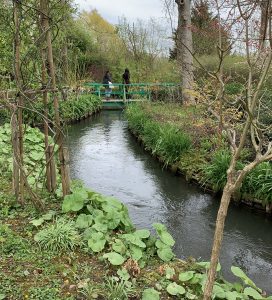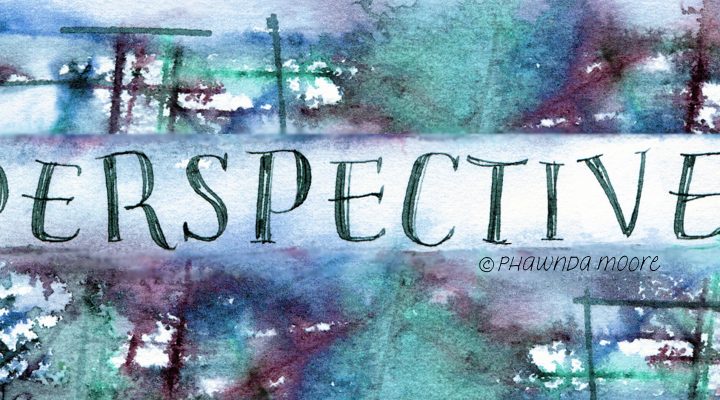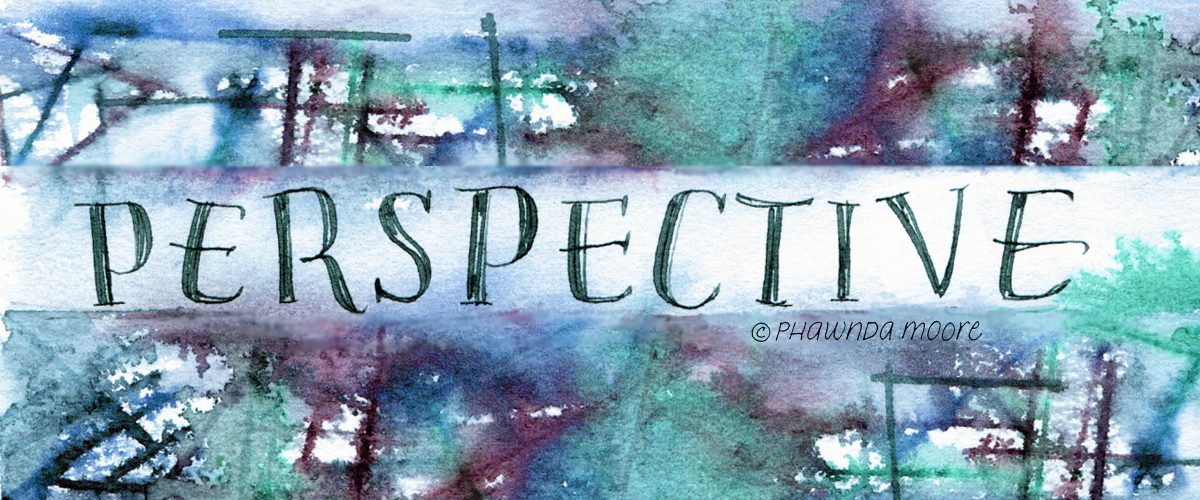“Write for your audience” is the golden rule for professional communicators. In education, for example, our division crafted speeches, news releases, fact sheets, memos and reports to the state Legislature, employees, board members, students and parents, each from a different perspective.
When writers sit at the computer, we wear lots of different hats and shoes — kind of a mix-and-match look — during a day’s work.
When I wrote my own art book, I penned words and selected art to a less-defined reader profile. After almost two years in the making, the book went to the publisher, and I asked colleagues to review it. Seeing their perspectives better defined my audience with names and details. Not only were they valuable to me and other readers, their opinions added a sense of community to my book.
Lately I’ve realized anew how some seasons of life seem to exist to gain perspective. To be sure, it’s a process that takes time and commitment, and we can find ourselves lingering at the intersections for clarity.

Bridge inside Monet’s graden in Giverny, France.
The pandemic definitely has been one of those seasons, right? I recalled once standing on Claude Monet’s bridge over his water lilies when life was more peaceful. I wanted a repeat of that trip! According to travel sources, the famous bridge in his gardens and home attracts between 500,000 and 700,00 visitors to Giverny, France, annually.
Inspired by nature and light, Monet explained the process: “It’s on the strength of observation and reflection that one finds a way.” You can read about this master artist, who continued painting despite failing eyesight.
When used as imagery, bridges are symbolic of life transitions, like now. Many are leaving behind what’s familiar to traverse through uncomfortable shadows, often alone.
Somewhere in the middle, there’s a place to reflect and do a little creative thinking. Pause there to revisit at least three kinds of perspectives: that which is past (known), the present (often shifting), and the future (unknown, and likely fearful).
As you recall your own life story, let memories surface of your younger self, including:
- The people who were there for you or served to reveal truths.
- What you’ve gained and are grateful for.
- What you need to leave behind.
- What’s missing.
- Your hopes and dreams for tomorrow.
Speak aloud from your heart to a listening God. Then, in faith, release the questions, uncertainties and emotions into God’s hands for light and direction as you walk onto new ground.
“Because of the Lord’s great love, we are not consumed, for his compassions never fail. They are new every morning; great is your faithfulness”— Lamentations 3:22-23.
Looking back, the perspective of having been on the bridge changes, because we’ve changed. As the French master painter Eugene Delacroix observed, “At a distance this fine oak seems to be of ordinary size. But if I place myself under its branches, the impression changes completely: I see it as big, and even terrifying in its bigness.”
“Looking back, the perspective of having been on the bridge changes, because we’ve changed.”
Life transitions like illness and death heighten the need for exploring perspectives. A friend and I discussed an event that illustrates this with a world-famous musician who attended a live concert performance. In earlier times, he would have been the maestro.
But due to having Alzheimer’s, he sat in the midst of the orchestra and listened as they played the music. Suddenly this reserved and private man stood to his feet. Responding with delight, he beamed with simple childlike appreciation as he participated in the performance.
My friend and I thoughtfully exchanged various perspectives:
- If the conductor could’ve consented to being seen by the world, would he?
- Did his loved ones know/approve?
- Did the video intrude on his privacy?
Shifting to a larger perspective, we agreed that such an experience provided a new depth of awareness about the power of music because it was shared in a supportive way with others.
Any of us might become acquainted with this situation if we, or anyone we love, enter a world where memories become fragmented and rearranged.
In Social Work Today, Lindsay Getz writes: “Older adults with Alzheimer’s disease can often be challenged to find ways to stimulate their memory — or even to help them communicate. But creative forces such as music and art have been shown to make a dramatic difference for many with the disease.”
She adds: “There’s something transformative about using artistic skills. It tells us that what’s deep in our soul isn’t necessarily lost through dementia; it’s just that the patient has lost one way of accessing it. For many, music and art can be a successful way to access those memories and abilities again.”
When Dame Olivia Newton-John recently left this world, my first thought was, “Oh I’ll always remember (and listen to) her beautiful voice, singing now from heaven.” Newton-John lived her life graciously, accepted its challenges, thrived with lightness and humor, and reached out to others in love. In numerous interviews, she shared her faith and said she prayed the Lord’s Prayer every night.
She said: “Once you face your fear, nothing is ever as hard as you think.” And: “I live every day to its fullest extent and I don’t sweat the small stuff.”
Further research confirms that for all of us, “creative activities are powerful tools for promoting brain health in all people. They reduce stress, build emotional resilience, and provide healthy brain stimulation. All together, activities like playing music, painting, drawing and building things will help promote a sharper, happier mind at all ages. Creative pursuits like music and art are neuroprotective, meaning they shield the brain against cognitive decline as you age.”
A personal example of such a person is my college art professor who, in his 90s, spends time daily creating in his studio. He continues to inspire me.
The mysterious force of creativity is a gift to everyone, connecting us to deeper perspectives. Travel through life allowing wonder, asking questions and listening. Always be willing to shift your perspective to a new, and often enlightening, view.
Phawnda Moore is a Northern California artist and award-winning author of Lettering from A to Z: 12 Styles & Awesome Projects for a Creative Life. In living a creative life, she shares spiritual insights from traveling, gardening and cooking. Find her on Facebook at Calligraphy & Design by Phawnda and on Instagram at phawnda.moore.
Related articles:
It’s time to live like mystics | Opinion by Brett Younger
The charism of creativity | Opinion by Molly Marshall


